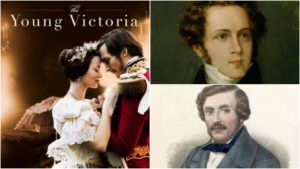
Opera Meets Film: ‘The Young Victoria’ Reminds Us of the Famed Monarch’s Passion For Bel Canto
By David Salazar“Opera Meets Film” is a feature dedicated to exploring the way that opera has been employed in cinema. We will select a section or a film in its entirety, highlighting the impact that utilizing the operatic form or sections from an opera can alter our perception of a film that we are viewing. This week’s installment features “The Young Victoria.”
Queen Victoria is one of the most famous monarchs in history, known for having an extensive reign and for being a major proponent of the arts. The Royal Albert Hall in London is named after her husband Prince Albert, with whom she reigned for 20 years until his premature death in his early 40s.
“The Young Victoria” alludes to the couple’s joint adoration for the arts, including a few passages from a few noted operas in exploring their courtship.
The film notes that Victoria’s favorite opera was Bellini’s “I Puritani,” a work which she often referred to as “dear Puritani.” The sequence takes place while Albert is preparing for meeting Victoria. Albert is questioned on what Victoria’s favorite work is, to which he replies, “Norma.” He is corrected and the film cuts to a scene of Victoria enraptured in a performance of “Vieni, vieni fra queste braccia” in a recording featuring the voice of Giuseppe Di Stefano. The choice of the love duet in the scene hints at what is to come between the two and the text of the opera itself is almost Albert himself speaking to Victoria across the opera. The fact that we don’t hear Elvira (as performed by Callas) in the excerpt, emphasizes the disconnect between Victoria and Albert at the present moment of the film.
The choice of “Puritani” in the film is interesting in this context as well – it was the first opera that Victoria attended with Albert prior to their marriage. We don’t see this in the movie, however.
Opera returns to connect them yet again later in the film, albeit in a different manner. We don’t see them go to an opera together or perform music together (Victoria took voice lessons with bass Luigi Lablache a year before her accession to the throne). Instead, they dance to Adina’s first aria from “L’Elisir d’Amore.”
The music is played as a waltz without voice, but those familiar with the Donizetti work will quickly identify the strange adaptation of the work in the context of the movie. The choice seems to be more grounded in Victoria’s repeated adoration of Italian music, especially the bel canto operas. This is also echoed in other strange adaptations of Italian hits of the time, such as Paganini’s “La Campanella” transformed into a waltz.
The film also makes repeated remarks about the different tastes in music between Albert and Victoria, citing his passion for Schubert numerous times. Victoria is shown growing interested in Schubert as her passion for Albert grows as well, though their affinity through their artistic interests is never fully developed as a theme in the story.
Ultimately the use of opera in the film contextualizes the time period and highlights some important facts about Victoria’s youth that would influence many of her decisions as a reigning monarch, especially with regards to the arts. More importantly, it invites audiences to dig deeper into the Queen’s passion for the artform.


